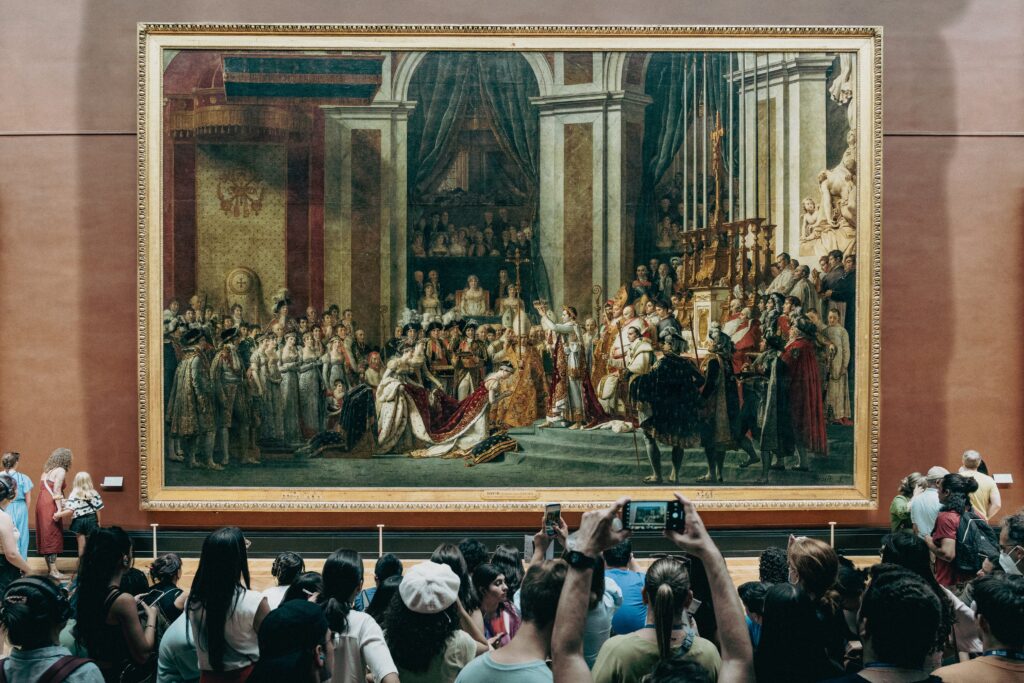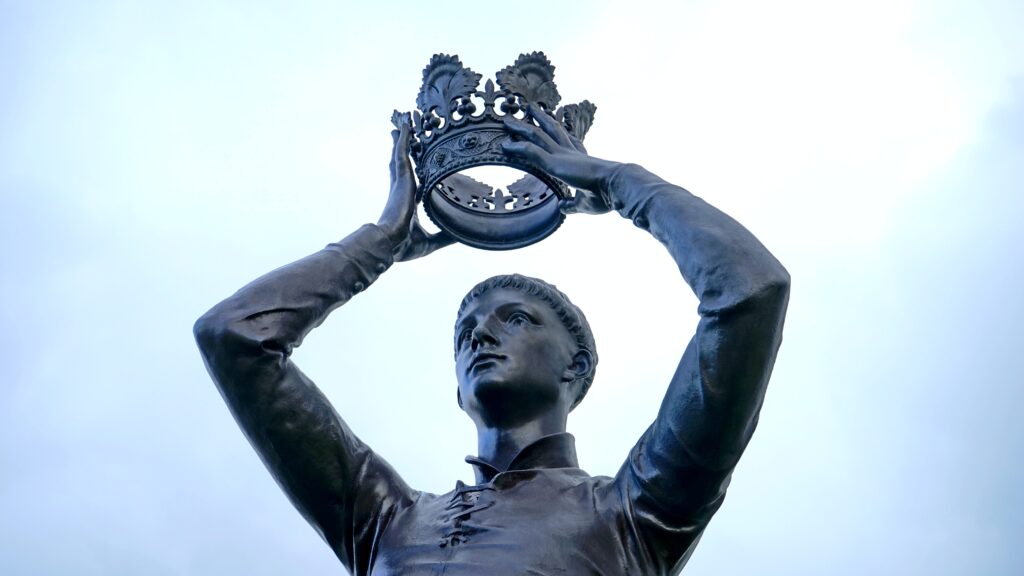
What’s in a coronation?
Alex Osborn examines just some of the many considerations which need to be thought about when Charles is crowned king this Saturday.
This Saturday (6th May), an ancient ritual which has not been performed in almost 70 years will be re-staged, as King Charles III is crowned at Westminster Abbey in the first coronation of a British sovereign to take place in the twenty-first century.
Whilst the exceptionally long reign of Queen Elizabeth II produced a number of momentous royal milestones, including much over-hyped weddings, poignant funerals and a run of unprecedented jubilees, the majority of the new monarch’s subjects will have never witnessed a coronation before.
So long ago was the last one that, inevitably, many have lost sight of what the central tenets of the coronation service represent. What is the point of hosting such an elaborate and, to many, anachronistic and constitutionally unnecessary ceremony in twenty-first century Britain, and how successful have King Charles’ attempts been to modernise it?
It is not essential by law for the coronation to take place in order for the monarch to rule – King Charles succeeded to the throne the moment that his mother died, and were the coronation not to take place, he would remain the undoubted sovereign until the point of either his abdication or death.
The British monarchy is the only surviving monarchy in Europe to have retained an explicitly religious coronation ceremony composed of rituals dating back to the Anglo-Saxon period.
All other European royal houses have abandoned coronations in favour of simpler, secular inauguration or enthronement ceremonies.
I recall being in Seville on the day that King Felipe VI was enthroned as King of Spain following the abdication of his father, Juan Carlos. Save for a prayer of goodwill for the new King and Queen during the Mass for the Feast of Corpus Christi at Seville Cathedral, one would have been totally unaware that anything of any constitutional significance had taken place, given that the low-key proclamation ceremony was held behind closed doors at the Palacio de las Cortes in Madrid.
In contrast, King Charles’ investiture will be a public spectacle of pageantry delivered on a scale rivalling any of the magnificent royal occasions we have seen in recent years.

In the words of Queen Elizabeth II during an illuminating BBC documentary revisiting her own coronation, the service essentially marks ‘the beginning of one’s life as a sovereign’.
The basic structure of the ceremony has changed little since the order of service was first documented in a mediaeval manuscript over 600 years ago. First, the monarch is formally ‘recognised’ as the nation’s authentic sovereign in front of God and their subjects. He or she then proceeds to take an oath, be anointed with holy oil, and invested with regalia – including the Sovereign’s Orb and Sceptre, the Sword of Offering and the Sovereign’s Ring, also known as the Wedding Ring of England.
Finally, the monarch is crowned by the Archbishop of Canterbury with the cumbersome St Edward’s Crown, created after the English monarchy was restored under King Charles II in 1660, which will be replaced with the lighter Imperial State Crown before the King leads the procession out of the Abbey. After the enthronement, the monarch would traditionally receive the homage of the peers, although it is understood that only Prince William will perform this duty at the forthcoming coronation owing to his position as heir apparent.
For King Charles, re-presenting the coronation in 2023 as a reflection of an institution which understands modern Britain has not come without its challenges. Two principal ones are, firstly, the desire to avoid generating untoward controversy in a society which is becoming increasingly sensitive to the complicated legacy of the empire. Secondly, to acknowledge a contemporary insistence on showcasing diversity in public and cultural spaces regardless of how appropriate or relevant this might be.
Much has been made of the King’s wish to incorporate other faith communities into the service, and it has now been revealed that Muslim, Hindu, Sikh and Jewish peers will assist in presenting the King with four of the key pieces of regalia. However, tensions are said to have arisen between Buckingham Palace and the Church of England over the extent to which such modifications are fitting in a ceremony which is indisputably Anglican, given that it is the point at which the King formally pledges to ‘maintain and preserve inviolably the settlement of the Church of England’.
King Charles’ consort, Camilla, will be anointed and crowned in a smaller ceremony immediately following the King’s crowning, as is traditional for Queens Consort, although her attendants will be members of her own family rather than the traditional group of duchesses, as a way of recognising the blended family dynamic at the heart of the ‘modern’ monarchy.
Queen Camilla will also be crowned with the Crown of Queen Mary, consort of George V, rather than with the Crown of Queen Elizabeth the Queen Mother, the most recent Queen Consort in history, so as to avert a diplomatic row over the disputed ownership of the Koh-i-Noor Diamond. The 105-carat stone is mounted in the front cross of the Queen Mother’s crown, and for many has come to symbolise the worst transgressions of Britain’s colonial expansion.
All three Queens Consort of the twentieth century had a new crown made especially for her in advance of her husband’s coronation – an expense and an extravagance naturally considered unjustifiable during an ongoing cost-of-living crisis.
Perhaps the most visible change will be the composition of the attendees, and there is as much significance in who has not been invited as there is in who has. It was always going to be a headache shrinking the guest list from the 8000 people who were crammed into the Abbey for the late Queen’s coronation to the 2000 who are expected to attend her son’s.
Many of those who have found themselves culled are from the upper echelons of the aristocracy, who may have expected to participate in a coronation by right of their position. These individuals will largely be replaced by representatives of the King and Queen’s charities, or worthy members of society selected to attend on account of carrying out good works in their communities.
The de-coupling of the monarchy from the aristocracy, and the forging of a greater alliance with the meritocracy, may seem an obvious way of trying to preserve the institution in a parliamentary democracy. But such decisions always have consequences, and it will be important for the King not to alienate the peerage entirely – the peerage who would have once, by tradition, pledged to him their loyalty and allegiance.
By ‘personalising’ the choice of attendees, the monarchy risks opening itself up to the charge that it is undermining the idea of the unity of the nation, by giving overt prominence to the existence of multiple communities who cannot necessarily all identify with the crowned individual as their figurehead.
It is important, however, not to allow these questions to detract from what the coronation actually is, and will remain, in spite of these outward differences.

The historian David Starkey has described the British coronation as a curious combination of ‘contract and consecration’.
Contract, because the monarch enters into a kind of transaction with his or her people, in which he or she promises to govern his or her subjects according to their respective laws and customs – ironically, given their exalted position, the sovereign remains circumscribed by laws made by other people.
Consecration, because by being anointed in the manner of a priest, the monarch is seen to be divinely ordained for their role – entering into a unique relationship with God as a result and ultimately becoming accountable only to God in their duty and not to his or her subjects.
We all know how importantly the late Queen viewed her personal Christian faith, and King Charles takes after his mother in this regard. Despite all the concessions to modernisation, it is interesting to note that the anointing is still considered such a sacred moment that it will remain the only part of the coronation service not to be shown on television, as was the case at the Queen’s coronation in 1953.
I am inclined to agree with Starkey that we miss something if we view the past as wholly distinct from the present. During the coronation we will see history literally and metaphorically forming the present, as we accept the symbolic end of the period of mourning for Elizabeth II and witness the seamless continuation of the monarchy in the person of her successor, who will be handed the same instruments of state which were removed from her coffin at the conclusion of her committal service at Windsor.
Many in Britain will perhaps find it difficult, if not impossible, to relate to this, but ultimately the coronation is about cementing the relationship between the Head of State and their people, something which the Royal Family needs to keep doing following the loss of a much loved and respected Queen.
Arguably, never has there been a more fitting moment to place these timeless traditions in the foreground, as well as emphasise the monarch’s function as the supreme servant of our state. God save the King!
Like what you’ve read? Consider supporting the work of Adamah by making a donation and help us keep exploring life’s big (and not so big) issues!
Alex Osborn
Alex Osborn studied at University College London (UCL), where he took a First in English. He now works for the administration of Oxford University, and has undertaken a variety of roles in examinations and assessment, educational policy, and HR policy.


One Comment
Caroline
Great concise and informative article